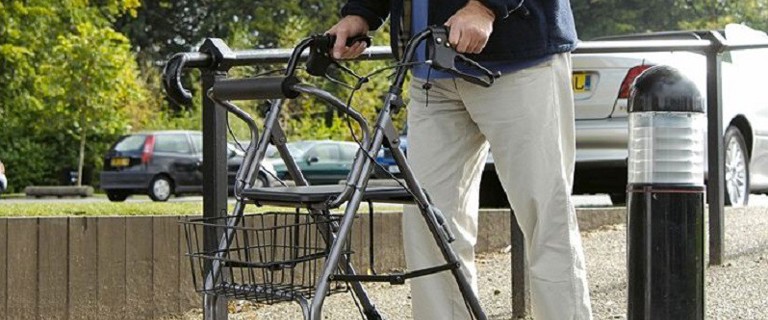Mobility aid training important for people with dementia

The role of health care professionals such as physiotherapists in prescribing mobility aids for people with dementia and training them in their use should be strengthened, a Canadian-Australian study has found.
People living with dementia have an annual fall risk of 60-80 per cent – twice that of people without cognitive impairment – and have a higher risk of major fall-related injuries.
Paradoxically, while mobility aids can significantly improve quality of life for most older people, their use is independently associated with a three-fold increase in falls risk for people living with dementia.
The new research, published in Disability and Rehabilitation, was based on interviews with 24 people with dementia and their caregivers in Canada and sought to understand the subjective experience of mobility aids for people with mild to moderate dementia.
Bolton Clarke Research Institute Fellow Claudia Meyer, part of the authorship team, is now part of a team through Monash University in Melbourne and Curtin University in Western Australia to build on this work.
Dr Meyer said only half of participants in the original study were recommended their mobility aid by a healthcare professional and there were contrasting views about the importance of training in use of the aid.
People with dementia acknowledged the need for and positive effect of a mobility aid to help with stability and expected it would provide the necessary support to prevent falls.
“I need it – there is no doubt about it, I need the cane,” one participant said.
“I don’t like it but it helps me with my balance – I feel quite safe walking around with it,” said another.
For many, a mobility aid helped protect a sense of self.
“I feel very independent with the cane,” a participant said.
For caregivers, the introduction of an aid helped reduce the burden of caregiving.
“For me it was a huge relief because he would just be walking along and suddenly tip over face first,” one caregiver said.
Challenges associated with using aids included terrains and crowds made training in proper use particularly important, however for many the aid was self-prescribed with no support provided.
Dr Meyer said lack of health professional involvement could lead to problems with the fitting of the equipment and lack of training for safe use, most commonly resulting in the aid being too low and changing the person’s centre of gravity, reducing stability.
A review of aids for height, mechanical soundness and correct use could be part of a regular health check by a healthcare professional.
While past research among older people had suggested a stigma around use of mobility devices this was not evident in this research.
“In contrast, our study sample of people living with dementia mostly saw mobility aids as facilitating stability, preventing falls and aiding independence,” Dr Meyer said.
“For them, these factors overcame any external or internal ageism and stigma.”
She said the study had reinforced the need for training.
“Importantly, the perception by the person using the mobility aid of the device’s safety is the strongest predictor for use of the equipment and improved mobility.
“There is a role for healthcare professionals to be involved in the prescription, provision and training for use of mobility aids among people living with dementia to ensure uptake and safety.”
Read the full article here: https://doi.org/10.1080/09638288.2020.1741700

